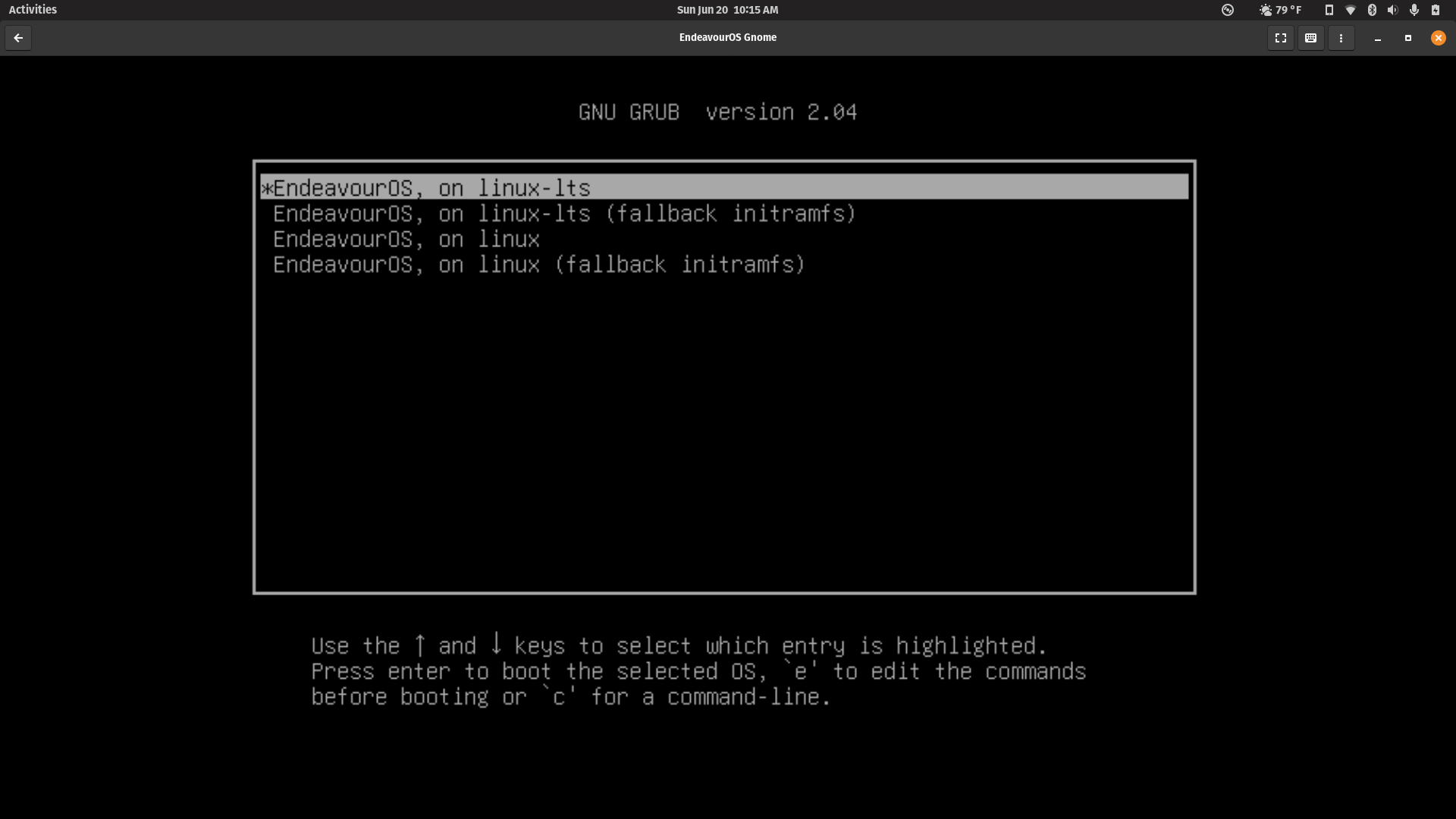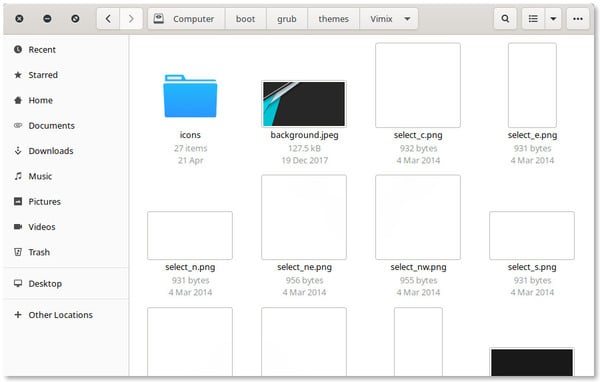

Under General Settings you can define the timeout (i.e., the time in seconds that GRUB waits until it continues booting the default entry without user interaction). In the List configuration tab, you can change the boot order of the operating systems found by GRUB by right-clicking an entry and selecting the up or down arrows to move the entry to a new location. You can also enter the grub-customizer command from a root console. On Fedora, look in the menu under System | System Administration | Grub Customizer. To customize the appearance of the boot menu, first launch Grub Customizer. Grub Customizer lets you include or change themes in a graphical user interface, adjusting settings that alter the appearance of the boot menu and making further changes to the configuration. Some distributions, including Fedora and Ubuntu, have Grub Customizer in their repositories. GRUB accesses this list during the boot process to generate a list of the operating system choices. GRUB searches the boot directory for kernel images and writes the names of the filenames' image files to the GRUB configuration file. Use the commands in Listing 1 to create the necessary backup copies.

First Step: Backupīut before you get started, you will want to back up the boot partition or boot directory: A faulty GRUB configuration can quickly lead to entries disappearing from the boot menu or a system unable to boot. On the other hand, editing the files manually is a time-honored practice if you know what you are doing, and it might be your only option: Some Linux distributions don't provide a graphical tool. A tool with a graphical user interface can help ensure that editing the GRUB files is a safe experience. But be aware that incorrect GRUB settings can quickly cause the boot process to fail. With just a few settings, you can spice up a drab and confusing boot menu. The boot menu sometimes contains real choices, including alternative boot options and operating system versions, and some attention to design can make those choices much easier to see and understand. The need for visual clarity is often more than cosmetic. If you settle for the default boot menu, you might be missing the chance to provide some visual enhancement to the user experience. Many Linux distributions keep the boot menu so simple that it hardly differs from the BIOS messages.


 0 kommentar(er)
0 kommentar(er)
